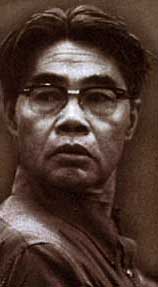Note from the Editor: Aaron Alcana is one of UniPro’s interns for the fall. As part of Fil-Am History Month, interns explored California's new law to include history on Fil-Am farm workers and their efforts in the state's education curriculum. Read on to see Aaron's thoughts on labor leader, Philip Vera Cruz. By Aaron Alcana, guest contributor
In present day America, the Filipino community is finally gaining the recognition it deserves for its invaluable involvement in the American labor movement. Early in the month of October 2013, Governor Jerry Brown signed a bill that requires that the California academic curriculum include the contributions of Filipino-Americans during the farm labor movement. This gigantic step for Fil-Ams was a great way to start off October, which is also Filipino American History Month. A key leader during this time period was Philip Vera Cruz, and the Californian Department of Education believes his contributions to the movement are important enough to be included in the education of young students.
Philip Vera Cruz was instrumental in the founding of the United Farm Workers Union. He was born in Ilocos Sur in the Philippines in 1904. At a young age Vera Cruz began working on the farms in his town. Vera Cruz would later described his work in Ilocos Sur to be much easier than the work he would endure in California. This statement goes to show how difficult it was for him to gain his fair share in America. In 1926 he moved to the United States and worked a variety of positions, including working in a restaurant and a box factory. He would eventually settle in California, where he began working as a farmer to support himself. In the 1950’s, Vera Cruz joined the National Farm Labor Union and with this organization he helped bring together groups of Filipino farm workers. When all these groups combined, they called themselves the Agricultural Workers Organizing Committee (AWOC). The AWOC led the Delano Grape Strike, during which the farm workers demanded that grape growers pay their workers’ wages equal to the federal minimum wage. The Filipinos were the majority of the AWOC. Eventually the Mexican population, led by Cesar Chavez, joined the Filipino workers on strike. When the Filipinos and Mexicans joined together, they became the United Farm Workers (UFW). The Delano Grape Strike comprised of around 10,000 workers and it lasted about 5 years. This movement was a peaceful one, as it utilized boycotts, marches, strikes, and other organized events. By 1970, the UFW were able to reach an agreement with the grape growers they worked for. The companies that sold the grapes grown in Delano felt pressured by the boycotts and strikes because now they couldn’t make money selling their products. Without the farm laborers, there was no one to grow and harvest the grapes that the companies wanted to sell.
In the UFW, Philip Vera Cruz served as the Vice President and as a member of the managing board. In 1977, he resigned from the union because he had differences with Cesar Chavez. Chavez was the same person who Vera Cruz worked hand in hand with to bring rights to the farmers in California. The reason he stopped seeing eye to eye with Chavez was because Chavez traveled to the Philippines and befriended Ferdinand Marcos. Vera Cruz saw Marcos as a brutal dictator and he didn’t want to be associated with him and his regime in any way. In 1987, Vera Cruz traveled back to his home country for the first time in 50 years to accept the Ninoy Aquino Award. He was awarded with this honor because of his involvement in the advancement of the Filipino population.
Young Filipinos in today’s society should respect and appreciate Philip Vera Cruz and his work. He succeeded in his goals by using hard work and patience; Vera Cruz never used violent tactics when leading the Delano Grape Strike. He gained positive results for all the farm workers who put their belief in him. Academics, particularly in California, are finally giving Vera Cruz the recognition he deserves by adding his accomplishments to the educational curriculum. The next step should be adding his peer’s accomplishments to the education programs across the country.
In present day America, the Fil-Am youth are searching for a person that they can look up to for inspiration in American history. By adding the accomplishments of Philip Vera Cruz and his peers to the textbooks, the Fil-Am youth will realize that people like them have been contributing to the advancements of America for a long time. Hopefully, after learning about the accomplishments of previous Fil-Ams, the youth will be inspired to do something they believe in.
Photo credit: Pinoy Life


